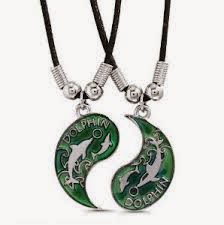Feral cats have recently been a huge thereat to the native wildlife
across Australia. They are dreaded to bring about the complete eradication of
certain species of animals. Besides being a big danger to the Australian
marsupials, it also threatens the farm animals-sheep and cattle alike. Australian
govt. has put the plans in place to completely eradicate these cats over next
10 years from certain Islands (Tasmania, Christmas Islands, Kangaroo Islands
etc.) where they have become a growing, ever increasing menace.
Parasite carried by feral cat
Besides acting as direct predators, they also kill animals by
spreading an infection and a disease called Toxoplasmosis. They carry a parasite
called Toxoplasma gondii.
The Toxoplasma parasite
needs to pass through two different animal hosts to complete its life cycle.
Some stages of the life cycle can occur in any warm-blooded animal (the
intermediate host), but the sexual stages can only occur in a cat (the
definitive host).
If the animal is healthy, the immune system usually produces
antibodies that keep the parasite under control. The parasite then goes into a
relatively dormant state, forming invisibly tiny cysts mainly in the heart,
lungs, brain, eyes, and spinal cord. While the cysts stay with the animal for
life, they rarely cause any direct harm. But for some animals, infection can be
deadly. If an animal’s immune system isn’t quite up to the task, either through
illness or stress, the initial infection can lead to toxoplasmosis. The disease
has a range of debilitating symptoms, including anorexia, lethargy, reduced
coordination, apparent blindness, enlarged lymph nodes, disorientation,
breathing difficulties, jaundice, fever, abortion, and death. Some of these
side-effects may kill the host directly, while for others, they will make the
host an easier target for predators.
Why do we need to completely eradicate the feral cats
Newly infected cats only shed the parasite for around two weeks.
However, in that short time, a single cat can shed more than 20 million
parasites in their faeces. Thousands of mammals and birds can then become
infected, by eating food, soil or water contaminated by a single cat. Under
cool, humid conditions, these parasites can survive in the environment for at
least 18 months, continuing to kill wildlife long after the cat has left the
area. Also, A recent study found that 84% of feral and stray cats tested in
Tasmania were infected with the parasite. So, guys, better keep your kids from
playing with the stray cats. From today itself, I am going to stop feeding
cheese to the stray cat that comes to say good morning to me everyday.
Fascinating way in which the parasite manipulates the rat brain
Once this parasite infects a rat/mouse, it travels through the blood
stream and lodges itself in a certain specific areas of brain, where these
parasites form cysts. Now these cysts manipulate the behaviour of rats in such
a way that they become less fearful of cats. And that is what the parasite
wants. To complete the sexual stages of it’s life cycle, which can be
accomplished only in cats, it wants the rat to be eaten up by cat. Now isn’t
this fascinating? I mean, a dreadful end result, but a fascinating mechanism.
Threat to marsupials
Native species like eastern barred bandicoot, Tammar wallabies,
koalas, wombats, small dasyurids, Bennett’s wallabies and pademelons are under
big threat from this parasite, with infected animals found dead or stumbling
around blindly during the day, vulnerable to predators or cars as they stumble
onto busy roads.
Crazy cat lady theory ;)
The humans that are infected with this parasite show an altered
behaviour and personality, accompanied by reduced psychomotor performance (Jaroslav
Flegr, 2007).
If the source of infection is directly the cat, you must remember
that the parasite is more likely to propagate if there are two or more cats in
close vicinity to one another, as that would make the infection to keep on going
back and forth between the cats. Otherwise, as mentioned earlier in this blog,
the newly infected cat can spread infection for only two weeks. A possible
explanation of the 'criteria' for qualifying as Crazy Cat Lady, as 'to have more than at least two cats'! ;)
Humans can get the infection through any of these several routes:
-eating undercooked meat of animals harbouring tissue cysts
-blood transfusion or organ transplantation
-transplacentally from mother to foetus
-consuming food or water contaminated with cat faeces or by contaminated environmental samples (such as faecal-contaminated soil or changing the litter box of a pet cat)
Personally, I think that after
coming in contact with this information, I wouldn’t risk my already flimsy mental state, or add to my frequent inexplicable behaviour by having a cat as a pet. In fact, I have always been biased towards a
dog as a better choice for pet- especially if it’s a Doberman!! But for those of you who love cats, remember to take required precautions, about changing the litter in time and using disposable gloves while doing that, and also if possible, demarcating the cat-zone, and cat-free zone in your house. For the people with an undying love for cats, here's a gift from me....
Good luck with this starter kit, enjoy ;D....




